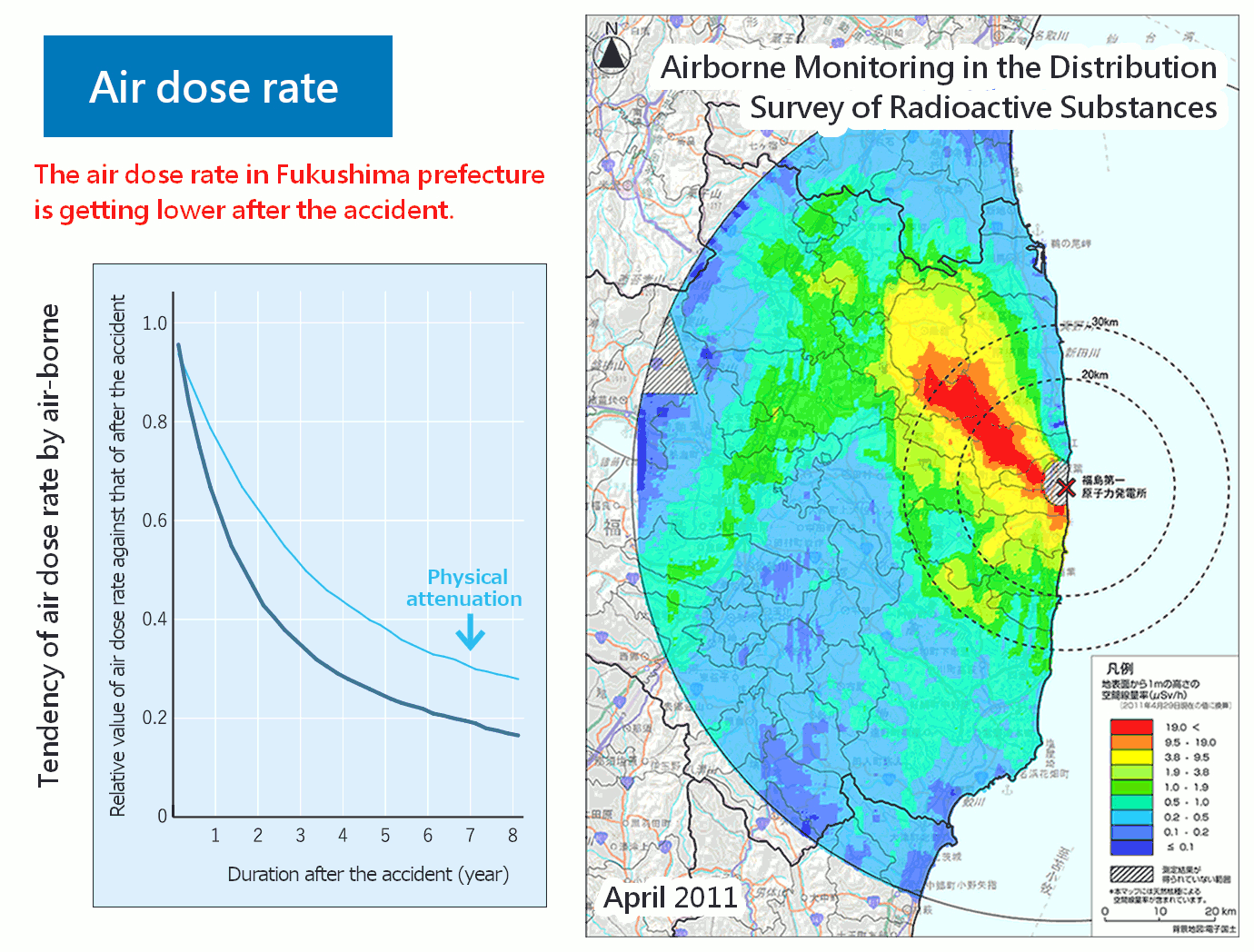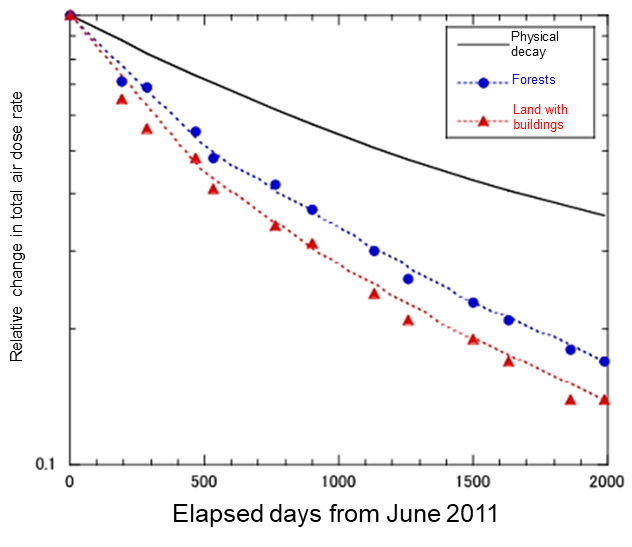Radioactivity and Air Dose Rate
(2014)
QWhat are the characteristics of places where air dose rates tend to decrease faster?
AA comparison of air dose rate reduction tendency between forests and urban areas shows that air dose rates decrease faster in urban areas. This is because cesium adhering to concrete and asphalt surfaces is more easily washed away by wind and rain. On the other hand, cesium tends to be slow to flow out of forests, making air dose rate reduction slower in such areas.
The amount of radiation-emitting cesium is decreasing over time. For example, Cs-137 (137Cs) decreases to one-half in about 30 years. However, it is known that the air dose rate, which represents radiation intensity, decreases faster than cesium does.
This is because cesium is washed away by wind and rain, a phenomena called the weathering effect.

Fig.1 Changes in radioactive materials and air dose rates from airborne monitoring

Fig.2 Changes in air dose rate on roads over time
The decrease in air dose rate tends to be slow in areas surrounded by forests and faster in urban areas with many buildings.
